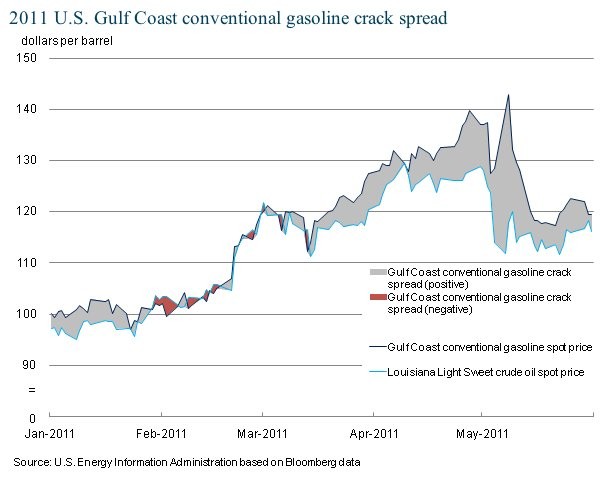Hotshots Needed For Commodity Trading Advisor Positions
Post on: 16 Июль, 2015 No Comment

So, you want to become a Commodity Trading Advisor (CTA). Perhaps you have worked at a trading firm and finally want to go out and start up your own shop. Maybe your personal trading portfolio over the last several years has been so extraordinary that your friends and family are practically begging you to manage their money. Or maybe, as the trading hotshot you are, you have just recently developed a proprietary trading system that seems to print money. Whatever the reason, you are now finally giving serious thought to becoming a Commodity Trading Advisor and making money off your trading skill. But where exactly do you start? And what should you expect once you hang out your CTA shingle? Read on to find out.
What Is a Commodity Trading Advisor?
The National Futures Association (NFA) defines a Commodity Trading Advisor as an individual or firm that directly or indirectly advises clients on buying or selling futures or options contracts. These professional money managers. which must be registered with the Commodity Futures Trading Commission (CFTC), are ultimately compensated by sharing in performance and/or charging a management fee.
Your First Steps to Becoming a Commodity Trading Advisor
There is no formal education process when it comes to becoming a CTA. While it is advisable to have worked at a trading firm prior to your career move, it by no means guarantees your success. Similarly, not having previously worked at a firm does not exclude you from becoming a CTA. There are scores of CTAs that have had no formal trading education prior to starting their own firm.
However, even before you apply with the NFA to become a CTA, you must first pass the Series 3 exam. This 120-question, 2.5-hour exam will gauge your understanding of and competency in the futures market’s makeup and regulations. (Tips for passing these tough exams can come in handy. For some general tips on passing financial exams, see The Key To CFP Exam Success and Studying For The CFP Exam .)
Are You Ready to Run Your Own CTA Firm?
As is true of any new venture, it is wise to take a step back and evaluate your situation. In this case, it first means looking at your trading returns and asking the following questions:
- How have you performed over a prolonged period of time?
- Were your returns consistent over a wide range of market environments? Or were they generated during an optimal trading environment for your strategy?
- Who is your competition? For example, if your strategy involves trading a diversified basket of futures markets from a systematic trend-following approach, take time to research the already-established CTAs that have a similar strategy.

Beyond evaluating your returns, you also want to consider your personal financial and emotional situation. Starting a new business is often stressful and risky. This is especially the case if you don’t have any cash coming in during your first year or two. Unless you are launching your CTA firm with a substantial amount under management, you can expect to forgo receiving a paycheck during your first year or two. Consider a case where you launch your business with a $1,000,000 account. If you charge the standard 2% management fee, you would only be receiving $20,000 a year, or just over $1,600 a month. This amount would probably not cover your operational expenses like trading costs, rent, administrative support and technology costs. Thus, making sure that you have money in the bank that will give you the ability to survive during the first couple of years of this venture is extremely important. (To read more about this, check out Start Your Own Financial Planning Firm .)
Setting Up Shop
Once you have evaluated and come to the conclusion that you are in prime shape to become a CTA, and you have successfully obtained your Series 3 license, your next step involves setting up your business. Take time to develop a detailed business plan that will not only cover your costs and potential revenue streams, but will also detail a marketing plan that will generate more business.
Before you can start soliciting clients’ money, you need to complete the following:
- Draft your disclosure document - The disclosure document is the piece of communication that you must submit to any prospective client. In it, the document outlines information about yourself, your trading program, the risks associated with the trading program, the fees charged and other material that the CFTC and NFA require that you disclose to your potential client. Because the disclosure document has to be approved by the NFA before it can be sent out to clients, it is highly advisable that you hire an experienced attorney to draft the document on your behalf. The attorney will also be able to make any corrections should the NFA require changes to the document.
- Find the right brokerage firm - It is extremely important to find a brokerage firm that can provide you with a partner-like relationship. While there are many Futures Commission Merchants (FCMs) that can place trades for your accounts, not all of them will offer ancillary benefits that will ultimately help you become a successful CTA. Make sure that you find a firm that is able to assist you through the start-up process by providing you with insight, marketing support and operational support that will allow you to focus on what you are good at — trading. In addition, when searching for the right brokerage firm, make sure that you look for one that offers you a competitive commission rate. This is important because the less commission they charge your account, the more positive your account performance will be.
- Prepare your marketing material - It is always important to have some marketing material that professionally depicts your message and trading program. However, it is important to note that the NFA must approve any promotional material before it is submitted to potential investors. The definition for promotional material varies widely and includes websites, brochures, telephone scripts, etc. so make sure you take the time to read Rule 2-29 of the NFA Manual before you initiate any marketing and promotional material. Once you have the material approved, you can start soliciting business and start trading! (To learn all the ins and outs to mailings, see On The Record: Communications With The Public .)
How to Stay a CTA
Once you have become a CTA, your next goal is to become a successful CTA that is generating positive returns and consistently growing assets under management. In truth, setting up your CTA is the easy part. lasting as one is the hard part. The managed futures environment is a competitive one, and investors are looking for traders that have consistent long-term returns. Focus on generating returns that are not only near the top in terms of risk-adjusted metrics (e.g. Sharpe ratio. Calmar ratio. Sterling ratio. etc.) of your competition, but also that are consistent over time.
The other job requirement for becoming a successful CTA is actually a requirement that has many sides. You should be able to efficiently wear many hats when it comes to running your business. While your returns are clearly your number-one selling point, you must also exhibit an ability to market to interested investors and raise money for your trading program. Unfortunately, this added responsibility can be an extreme distraction to many traders that have no prior knowledge or qualifications when it comes to marketing, sales and running a business. If this is the case, you might want to consider partnering with an individual who will be responsible for the operations and development side of the business. In terms of raising capital, there are also third-party consultants that will raise money for you, but expect to share in the management and incentive fees.
If, however, you feel that multitasking is your forte, there are several different places where you can start marketing your trading program, including industry databases, third-party consultants, industry conferences and funds of funds looking to invest in start-up managers. Word of mouth from existing clients is also an invaluable marketing tool. (For more on these fields, see Consulting — Everybody’s Doing It, Should You? and The Lucrative World Of Third-Party Marketing .)
If you can get past these difficulties, there are substantial pros to becoming a CTA. Commodity Trading Advisors have the ability to work in an independent and entrepreneurial environment and be involved in an industry that is experiencing exponential growth. According to BarclayHedge, money under management in managed futures grew from $41 billion in 2001 to $205 billion in 2007 — a 500% increase! Once you get past the two- to three-year mark, and your risk-adjusted returns are near the top of your strategy, you can expect to attract attention from a whole new group of interested parties (like institutions, fund of funds and family offices) that are willing to place substantial capital in your hands. In turn, the fees you generate (typically a 2% management fee and 20% of profits) can provide you with a lucrative career that can possibly even surpass your wildest dreams.














